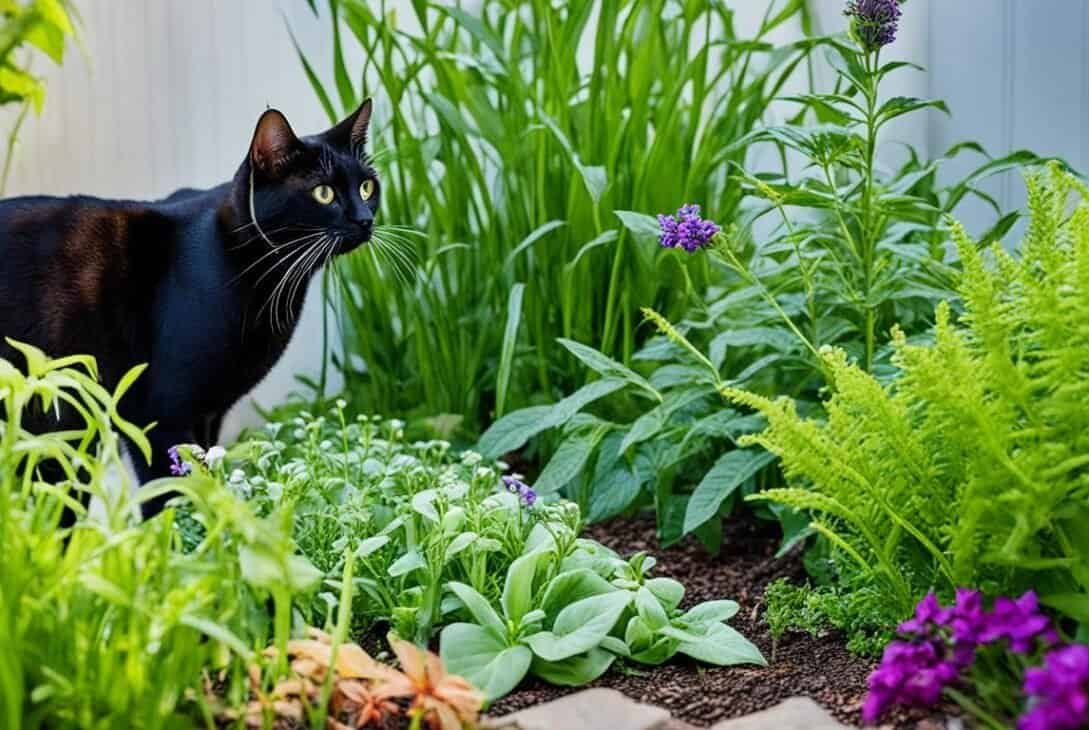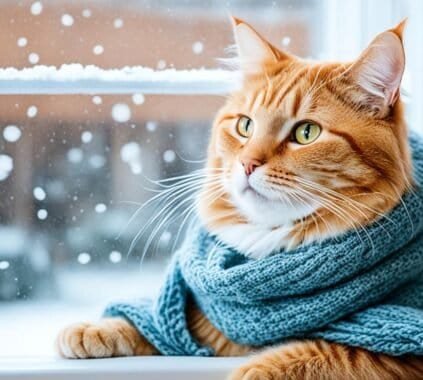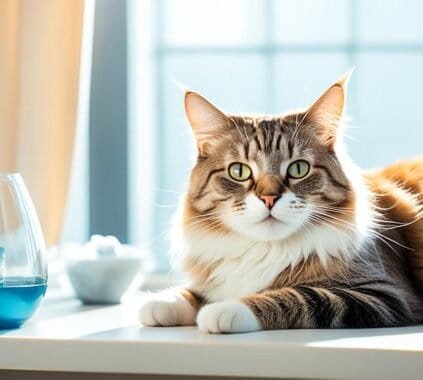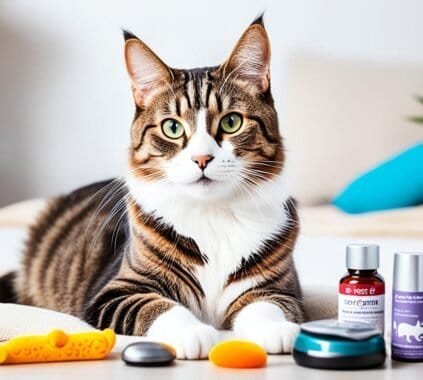Welcome to our informative guide on cat poisonous plants. As a cat owner, ensuring the safety and well-being of your feline companion is of utmost importance. Familiarizing yourself with the potential dangers that certain plants can pose is essential in providing a secure environment for your beloved pet.
Cats are naturally curious creatures, and their exploratory nature may lead them to nibble on plants they encounter. However, not all plants are safe for your furry friend. Some plants contain toxins that can cause severe health issues if ingested by cats, ranging from mild gastrointestinal upsets to more serious complications.
Key Takeaways:
- Make sure to keep your cat away from plants that are known to be toxic to felines.
- Indoor plants that are safe for cats include spider plants, Boston ferns, and orchids.
- When creating a cat-friendly garden, opt for cat-safe plants such as catnip, cat thyme, and wheatgrass.
- Symptoms of plant poisoning in cats can include vomiting, diarrhea, lethargy, and difficulty breathing.
- If you suspect your cat has ingested a poisonous plant, contact your veterinarian immediately.
Understanding the Risks: Dangerous Plants for Cats
As cat owners, it’s crucial to be aware of the potential dangers that certain plants can pose to our feline companions. While indoor and outdoor plants bring beauty and freshness to our homes and gardens, some of them can be toxic to cats.
Knowing which plants are harmful to cats and understanding the specific risks they present is essential for ensuring the well-being of our furry friends. Here, we will explore common toxic plants for cats, both indoor and outdoor, and highlight the symptoms and health risks that can occur if a cat ingests them.
Indoor plants have become increasingly popular in recent years, but many cat owners are unaware that some of these trendy greens can be harmful to their pets. For example, lilies, which are commonly found in floral arrangements, are highly toxic to cats and can cause severe kidney damage if ingested.
Other dangerous indoor plants for cats include aloe vera, jade plants, and certain types of ivy. These plants may seem harmless, but ingestion can lead to symptoms such as vomiting, diarrhea, and even organ failure in severe cases.
When it comes to outdoor plants, there are several toxic flora for felines that cat owners should be cautious of. Some common examples include azaleas, tulips, daffodils, and chrysanthemums. Ingesting these plants can result in symptoms like drooling, difficulty breathing, and in extreme cases, seizures or even death.
To keep our cats safe, it’s vital to familiarize ourselves with the harmful indoor and outdoor plants and take appropriate precautions. Placing toxic plants out of their reach, ensuring a cat-friendly environment, and opting for cat-safe alternatives can help mitigate the risks and keep our feline friends healthy and happy.
Creating a Cat-Friendly Environment: Cat-Safe Garden Plants
When designing your outdoor space, it’s crucial to consider the safety and well-being of your feline friend. Incorporating cat-safe garden plants into your landscape not only adds beauty but also provides a stimulating environment for your cat. These plants are non-toxic and pose no harm if your curious companion decides to explore them.
To create a cat-friendly garden, here are some recommendations for cat-safe plants:
- Mint: This fragrant herb is a cat favorite and can be grown in pots or planted in your garden. It’s not only safe but also acts as a natural mosquito repellent.
- Lemon balm: Cats are often attracted to the citrus scent of lemon balm. This herb is safe for them to nibble on and can be grown as a border or ground cover.
- Spider plant: Known for its aesthetic appeal, the spider plant is also non-toxic to cats. Its long, arching leaves provide visual interest while offering a safe green space for your pet.
- Calendula: This vibrant flowering plant not only adds color to your garden but is also safe for your cat. Calendula can be grown in beds or containers and provides a playful atmosphere for your feline.
- Thyme: Thyme is a versatile herb that can be used both in cooking and in your cat-friendly garden. It’s a safe choice and adds a lovely aroma to your outdoor space.
- Rosemary: Another herb that is safe for cats is rosemary. Its woody fragrance and evergreen leaves make it an attractive addition to your garden.
Remember to always monitor your cat’s behavior around plants and ensure they have access to fresh water and shade in their outdoor environment. By incorporating cat-safe plants into your garden, you can create a happy and stimulating space for both you and your beloved feline companion.

Keeping Your Home Safe: Cat-Friendly Houseplants
Indoor plants not only add beauty and freshness to our homes but can also provide numerous benefits for our well-being. However, when you have a furry feline friend roaming around, it’s crucial to ensure that the plants you bring into your home are safe for them as well. To help you create a cat-friendly environment, we have compiled a list of popular and common houseplants that are non-toxic to cats.
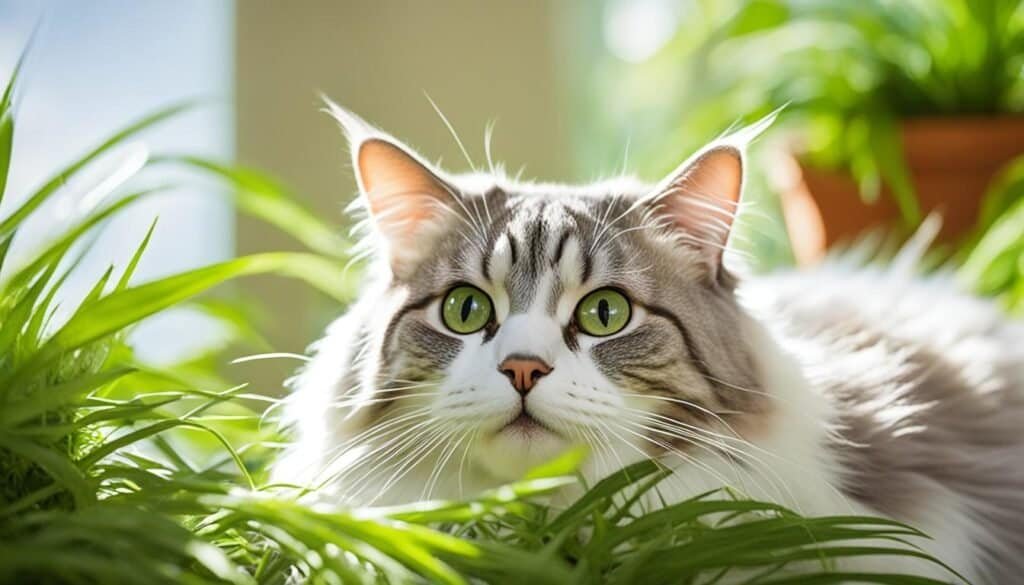
1. Spider Plant (Chlorophytum comosum)
The Spider Plant is not only visually appealing with its arching, variegated leaves but is also safe for cats. This resilient plant is known for improving indoor air quality, making it an excellent addition to any home.
2. Boston Fern (Nephrolepis exaltata)
The Boston Fern is a lush and green houseplant that can thrive in both bright and low-light conditions, making it perfect for various rooms in your home. It is safe for cats and adds a touch of elegance to any space.
3. Areca Palm (Dypsis lutescens)
The Areca Palm, also known as the Butterfly Palm, is a cat-friendly houseplant that can help purify the air in your home. With its feathery fronds and tropical vibes, it brings a refreshing touch to any indoor setting.
4. Calathea (Calathea spp.)
Calatheas are a diverse group of plants known for their striking foliage patterns. These cat-safe houseplants not only add visual interest to your space but also thrive in low-light conditions, making them ideal for homes with limited natural light.
5. Money Tree (Pachira aquatica)
The Money Tree, also known as Pachira aquatica, is a popular houseplant that is considered safe for cats. This plant is believed to bring good luck and prosperity, making it a delightful addition to any cat-friendly home.
- Note: It’s always a good idea to supervise your cat’s interactions with houseplants, as some felines may still attempt to eat or chew on them, causing potential harm. If you notice any signs of discomfort, such as vomiting or diarrhea, consult your veterinarian immediately.
Create a safe and harmonious environment for both you and your feline companion by choosing cat-friendly houseplants. Not only will you enjoy the beauty of indoor greenery, but you can also have peace of mind knowing that your cat is safe from any potential plant-related dangers.
Conclusion
The health and safety of our feline companions should always be a top priority, and this includes being aware of the poisonous plants that can pose a threat to them. By understanding the risks associated with dangerous plants for cats, we can take necessary precautions to keep our beloved pets safe.
Whether it’s creating a cat-safe garden with non-toxic plants or choosing cat-friendly houseplants for our indoor spaces, there are plenty of options available to help us strike a balance between a green environment and our cat’s well-being.
Remember to keep toxic plants out of your cat’s reach at all times. Some common plants to be cautious of include lilies, azaleas, daffodils, and tulips. It’s always a good idea to consult with your veterinarian to get a comprehensive list of poisonous plants that you should avoid in your home and garden.
By staying informed and taking necessary precautions, we can ensure that our cats stay safe and healthy, free from the dangers of poisonous plants. Let’s create a cat-friendly environment that offers both beauty and security for our beloved feline friends.
FAQ
Are there cat poisonous plants that are toxic to cats?
What are the symptoms of plant poisoning in cats?
Can cats safely enjoy an outdoor garden?
What are some cat-friendly houseplants?
Which plants should I avoid to keep my cat safe?
Last modified: March 13, 2024

